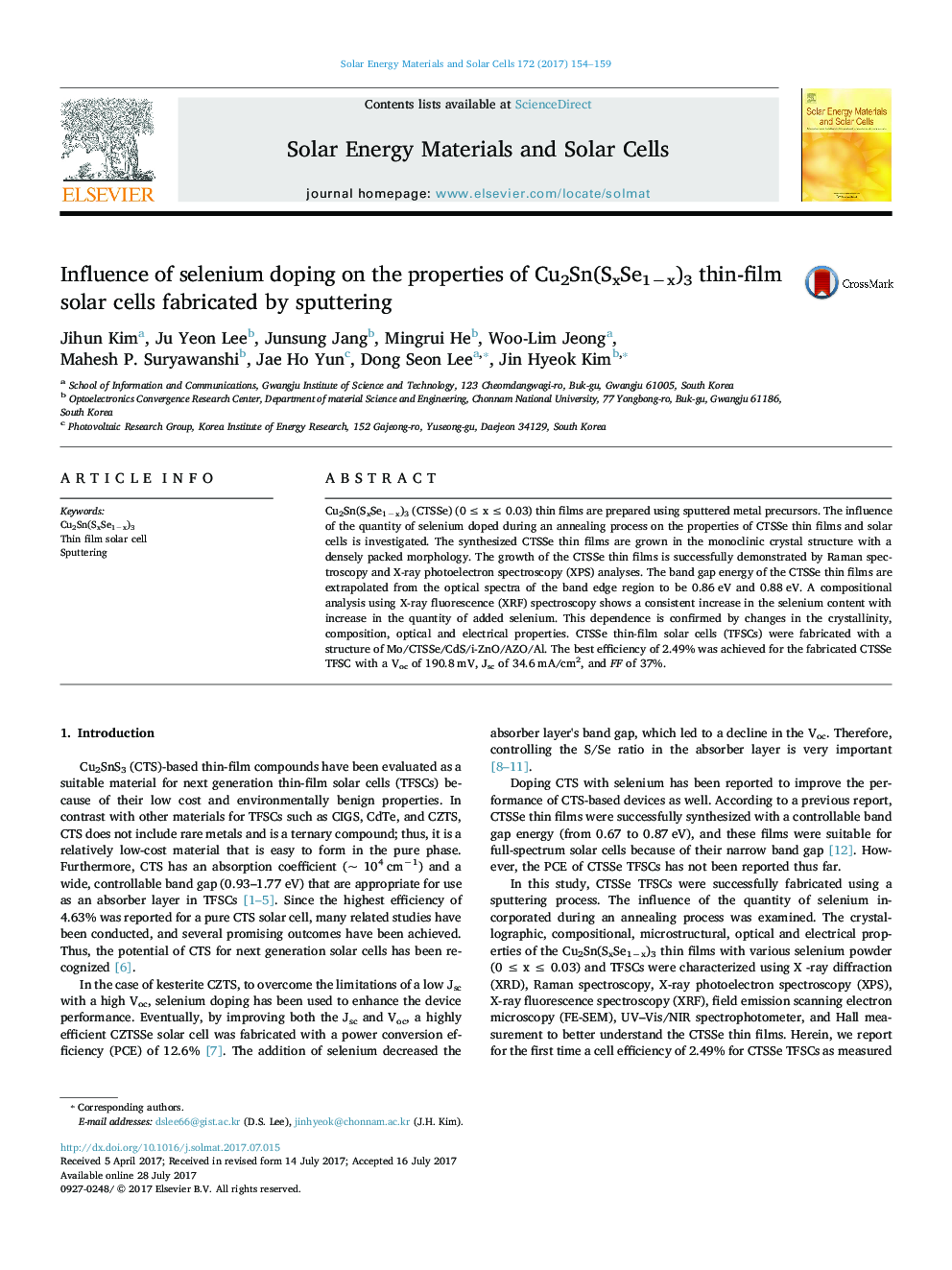| Article ID | Journal | Published Year | Pages | File Type |
|---|---|---|---|---|
| 6456903 | Solar Energy Materials and Solar Cells | 2017 | 6 Pages |
â¢Cu2SnS3 (CTS) and Cu2SnSSe3 (CTSSe) thin films are prepared using sputtering system.â¢Influence of selenium doping on the properties of CTS based thin film is investigated.â¢XRD, XPS and Raman analysis confirmed that the CTSSe phase formed.â¢CTSSe solar cell doped with 0.01 at% of selenium exhibited the best efficiency of 2.49%.
Cu2Sn(SxSe1âx)3 (CTSSe) (0 ⤠x ⤠0.03) thin films are prepared using sputtered metal precursors. The influence of the quantity of selenium doped during an annealing process on the properties of CTSSe thin films and solar cells is investigated. The synthesized CTSSe thin films are grown in the monoclinic crystal structure with a densely packed morphology. The growth of the CTSSe thin films is successfully demonstrated by Raman spectroscopy and X-ray photoelectron spectroscopy (XPS) analyses. The band gap energy of the CTSSe thin films are extrapolated from the optical spectra of the band edge region to be 0.86 eV and 0.88 eV. A compositional analysis using X-ray fluorescence (XRF) spectroscopy shows a consistent increase in the selenium content with increase in the quantity of added selenium. This dependence is confirmed by changes in the crystallinity, composition, optical and electrical properties. CTSSe thin-film solar cells (TFSCs) were fabricated with a structure of Mo/CTSSe/CdS/i-ZnO/AZO/Al. The best efficiency of 2.49% was achieved for the fabricated CTSSe TFSC with a Voc of 190.8 mV, Jsc of 34.6 mA/cm2, and FF of 37%.
